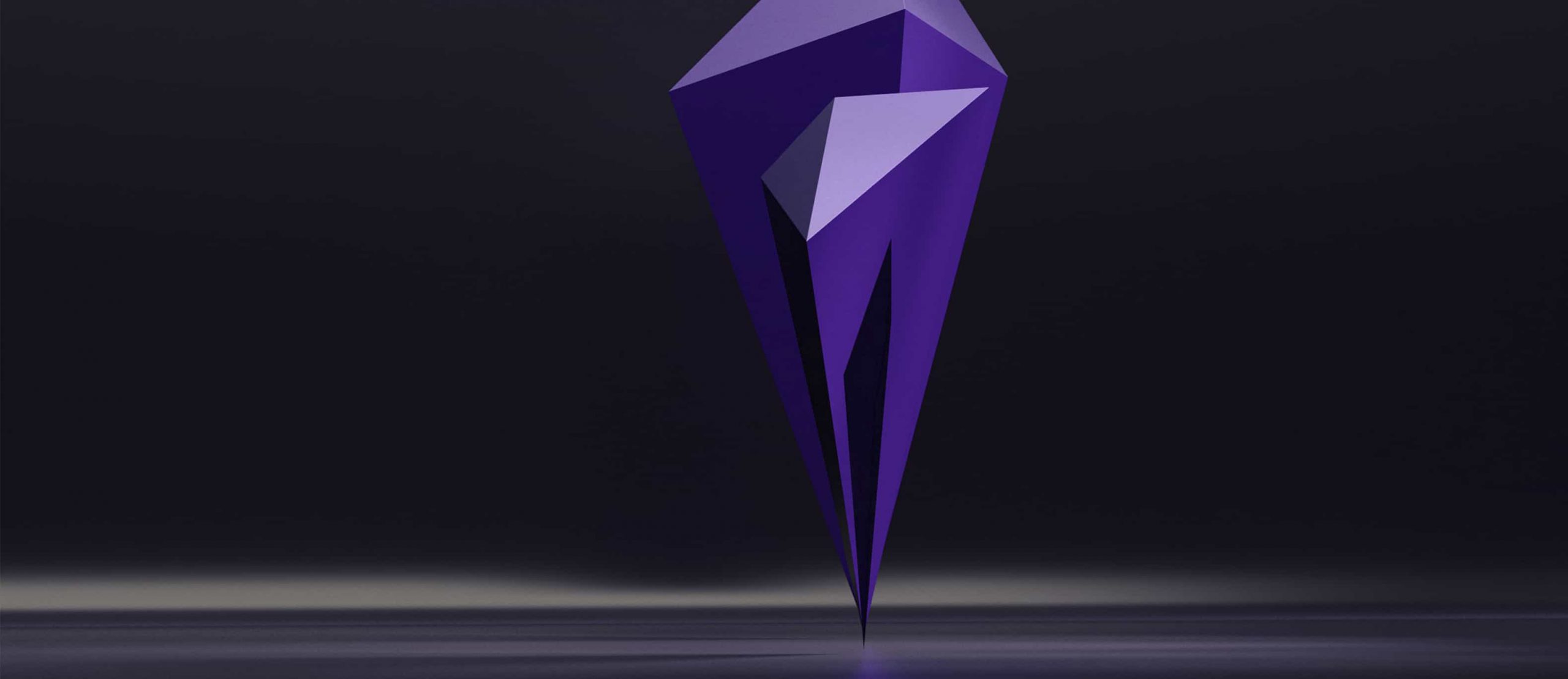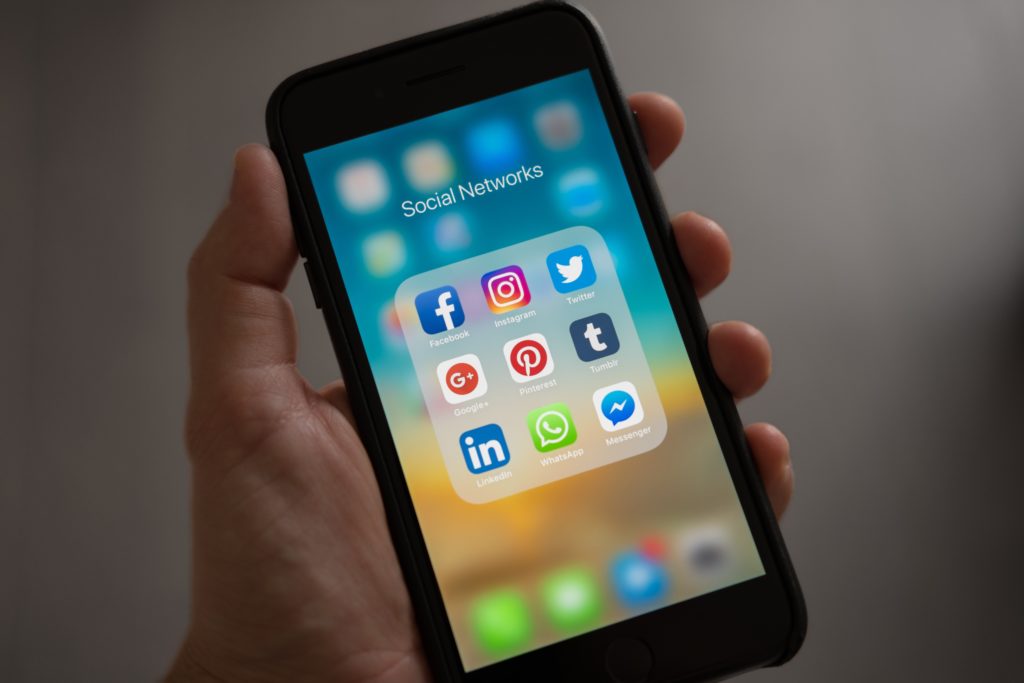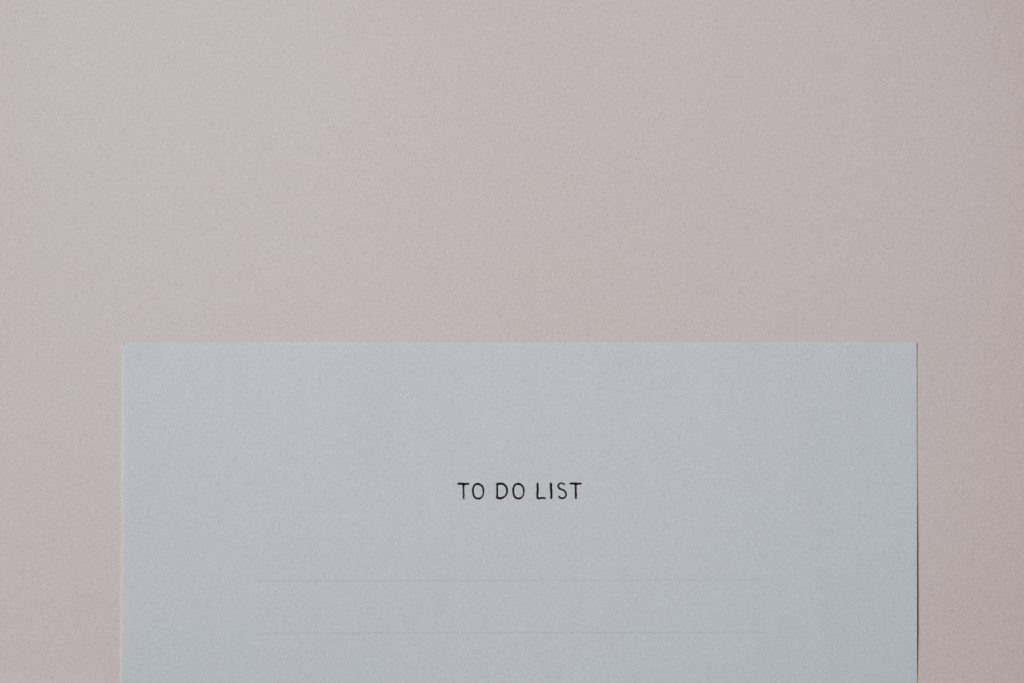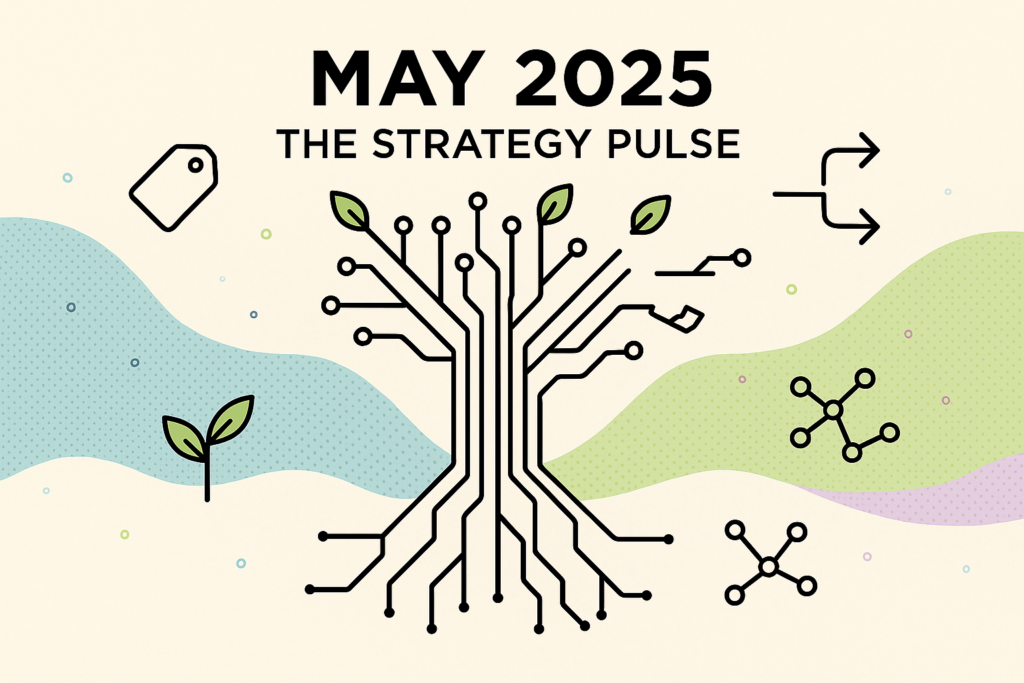Author: Rudy Fernando

A guide to handing in your notice
A guide to handing in your notice
June 14, 2022

Handing in your notice is no easy feat.
Before you ride off into the sunset with your sparkly new dream job waiting on the horizon, you are obligated to bid adieu to your current employer, informing them of your decision to pursue an opportunity elsewhere.
The prospect of handing in your notice may, for some, elicit euphoric excitement. Perhaps you’ve been waiting for this moment, like a child counting down the days until Christmas. If you’ve been particularly unhappy in your role for a while, it may seem like this is the opportunity for you to express your grievances and air your frustrations, before dropping the mic and strutting out of your workplace in slow motion like a scene in a Hollywood movie.

Or perhaps you’re totally and utterly dreading it. If you’ve had a positive experience at your current place of employment, it can be difficult to break the news to your team. Preparing to hand in your notice feels like gearing up to break up with a long-term partner.
Either way, whether you love or loathe your current station, it’s important that you approach your resignation tactfully. Even if you despise your boss, avoid causing a scene when you hand in your notice. Handle the situation respectfully, so that you don’t run the risk of burning any bridges.
And if you’re avoiding that uncomfortable conversation with your boss like the plague because it feels like a personal betrayal, don’t fret. There are ways to make the process as painless as possible, but like a plaster that needs to be ripped off, you just need to get it over with. You can’t avoid it forever.
Handing in your notice is uncomfortable but unavoidable. It’s wise to go into that meeting armed with some best practices to ease you in.
Timing is paramount
You need to choose the optimal time to hand in your notice – timing is key. Don’t make the mistake of letting your boss know first thing on Monday morning; this will set the tone for the week, and may cause an awkward atmosphere to set in. Prime time to schedule a meeting is at the end of the day, when most people have dispersed from the office and your boss is most likely free to have a chat, as they have no other meetings arranged for the day. Doing it on a Friday gives your employer time to process your news, as the weekend serves as a cooling-off period.

Obvious as it may sound, you also need to be tactical about who you hand in your notice to. If you work at a larger corporate company, you most likely answer to a line manager who could be the first point of call when it comes to resigning, or else you may need to report directly to an HR department. At smaller businesses, you most likely will be breaking the news to the director.
Crucially, make sure you carve out a meeting with the person you report to, and avoid telling your co-workers about your plans to leave before you’ve had that all-important conversation with your employer. The last thing you want is for the news of your departure to be spreading like wildfire, the talk of the town that becomes an office game of Chinese whispers. Your boss may find out from them before they have the chance to hear it from you.
Stick to your guns
When you walk into your employer’s office, you may be feeling unsure of yourself, and anxious about the uncomfortable conversation that awaits. However, it’s important to give yourself a little pep talk as you brace yourself for this moment, and don’t let yourself be swayed by anything your boss may throw your way. Make sure that your reasons for leaving are cemented in your mind so that you won’t fold under the pressure if your boss presents you with a counter-offer. You had strong enough convictions to pursue other opportunities in the first place, so don’t lose sight of these now.
Make sure you have a pre-prepared set of reasons for leaving that you can tell your boss. But talk in terms of why the opportunity you’re leaving for is one you cannot refuse, rather than mentioning the pitfalls of your current role. You don’t want to leave the door open to negotiation, or give your boss the chance to present you with a counter-offer that seems to resolve everything. You need to make a mental note of some solid reasons for leaving that you cannot get at your current employer, so that they can’t tempt you by dangling a counter-offer in front of you.
Stick to your guns. You can’t let yourself be clouded by a sense of loyalty. Handing in your notice can be an incredibly difficult thing to do as it’s hard to separate emotion from this albeit professional decision, especially if you have a strong working relationship with your employer. But ultimately, you need to put yourself first.

Don’t bare all
If you’ve had a bad experience working at your current company, it’s best to steer clear of airing your grievances in any great detail to your boss. Keep the conversation professional; divulging all could burn bridges which you may come to regret in the future. It’s important to strike the right balance between remaining firm and standing by your convictions as well as staying polite and respectful.
And when it comes to writing a resignation letter, the same rules apply. Keep things short and sweet, and relatively vague. Your letter should reference your current role, and should include your notice period and the last day you will be working. No more, no less. You don’t need to compose a rambling soliloquy documenting all the negative experiences you’ve had working there. Less is more.
A safety net to fall back on
It’s advisable that you have a new job lined up before resigning from your current place of employment. Not only is this a practical safety net for you to fall back on once your employment is terminated, it’s also a light at the end of the tunnel that is something to look forward to, and can make the process of handing in your notice a little less daunting. Handing in your notice isn’t much fun; it’s a stumbling block that arises on the racetrack in front of you, but if you can see your dream job opportunity waiting at the finish line, it doesn’t seem as insurmountable as it otherwise would.
Having a new job waiting in the wings ensures a cushiony, soft landing once you’ve resigned from your current role. You don’t want a vacuum on your CV to appear when you leave your current job. Be sure that the offer you’ve received is set in stone; ask for the offer to be made in writing so that there’s no chance that it falls through last minute. It’s also crucial that your new employer is aware of your notice period so that you can set up a start date that works best for you.
Quitting your job doesn’t have to be an awkward and unpleasant experience. By following these best practices, you’ll be making the transition from one job to another as seamless and painless as possible.

Market research trends for 2022
Market research trends for 2022
May 25, 2022

In the wake of the coronavirus pandemic, the metaphorical rug was pulled from under our feet. Like a bolt from the blue, we were jolted out of our comfort zones and thrust into unchartered territory.
The landscape of the working world was one such aspect of our lives that changed irreversibly. Every industry has in some way felt the aftershock of the pandemic’s seismic tremors, and the market research sector is no different.
New and exciting trends are surfacing at a rapid rate in the market research sphere, with the pandemic having paved the way for and cemented some of these changes. Long-gone are the days of traditional, cumbersome and old-fashioned research methods; a new age of automation and AI-powered insights is dawning. The dramatic advancement of Martech no doubt forms the backbone of many market trends post-2020, a breeding ground for innovative new developments.
Let’s dive into some of the key trends shaping the market research industry in 2022.
Out with the old, in with the new
Now more than ever, brands are drowning under an influx of data which is gushing in from countless streams and sources. In order to stay afloat, brands need to be able to swim against the current by adopting new automation and machine learning tools, which have the capacity to decipher and filter down a large volume of different data sets. By integrating new technologies into their market research, brands can juggle a large quantity of data and streamline their research practices to make them more efficient, by allocating more time to value-add tasks rather than spending it attempting to parse through a torrent of data.
Automation and AI are proving to be the catalysts for the extinction of traditional market research methodologies. When AI is capable of gauging human emotions on video, or monitoring huge volumes of data, conventional research practices such as focus groups and in-person surveys are falling short, and losing ground against their speedier, more efficient competitors. The adoption of AI and automation is proving to be the key to efficient and up-to-date market intelligence.
Finding the platforms that work for you
With all the technology developments happening at the moment, it’s easy to see how there’s a scramble to adopt the latest Martech. Like a kid at Christmas, you may become wide-eyed when you catch sight of the new, shiny toy being dangled in front of you when it’s plastered all over a storefront, and rush home to put it on your wish list. But arming yourself with an unnecessarily well-stocked arsenal of Martech isn’t necessarily going to work in your favour.
When it comes to Martech, less is more. There’s so much technology out there, but when you depend on too many platforms at once, it’ll begin to feel like you’re balancing a growing tower of books that’s one gust of wind away from toppling over. It’s easy to lose track of your insights when you’re constantly switching between numerous different analytics tools. Many of the platforms available boast similar features or tools, so it’s best to stick to a handful that work for you rather than overdoing it. You may become overwhelmed quite quickly by an excess of Martech, so be discerning when it comes to choosing what you work with.
Social listening as a treasure trove for insights
Whilst social listening isn’t a new trend per se (in fact, it’s been a pretty common practice in the realm of market research for a while now, since we’ve tapped into the power of social media), it’s becoming impossible to ignore the fact that it’s a pivotal component of any market researcher’s toolkit. Internet users on average spend two hours and 25 minutes per day on social media, so it really is the place to be when it comes to gauging customer opinion on your brand. Engaging indirectly with consumers is a fundamental means of fleshing out your market intelligence.
Social listening goes far beyond the tracking of ‘likes’ and ‘views’ on a brand’s social pages. It involves analysing conversations that revolve around the brand, whether it to be to do with a new product release or service offering, or simply to measure general sentiment towards the company. Using AI, brands can tackle social listening on a massive scale, as many tools analyse countless social media conversations and feed back with actionable metrics that paint an insightful picture of the public perception of the brand.
Aligning brand messaging to customer values
Consumers nowadays are highly conscious of issues such as sustainability and diversity, and tend to back the brands that align with their values. When it comes to important issues such as equality, inclusion, and sustainability, brands need to put their money where their mouth is. Whilst preaching that your brand supports certain causes is all well and good, it’s no longer enough. Brands have to walk the walk and not just talk the talk.
Customers are paying close attention to the way companies conduct their business, making sure that their practices align with their personal values. Market research is needed in order to figure out where a particular brand’s customers stand on certain issues, and how the brand can adapt their business practices to meet the expectations of their audience. Customers want to support brands who align with their ethics and morals, and accordingly, brands should be digging deep to find out what makes their audience tick.
Remote is here to stay
One thing is for certain: due to the pandemic, our attitude towards remote working has undergone a sea change.
Once upon a time, remote working was practically unheard of. Sitting on your sofa and cuddling your dog whilst attending a business meeting? Blasphemy.
As a consequence of lockdowns, many of us had no choice but to move to working exclusively from home for extended periods of time over the past two years. As a result, a vast amount of people have come to prefer this method of working, and in the market research industry, this has actually had a positive knock-on effect for market intelligence. Remote market research can be a huge benefit in the long-term.
Video-based research will remain at the forefront of research practices for the foreseeable. Through platforms such as Microsoft Teams and Zoom, interviews and surveys can be conducted at the click of a button, without the burden of a commute or long-haul journey. Beyond this, video-based research could actually lay the foundations for positive change on the sustainability and inclusivity front. With customers now highly invested in causes close to their heart, it’s important that brands react accordingly by aligning their values with that of their audience. Video-based research could support this endeavour twofold; for one thing, it makes research practices more sustainable, as it demands less travel and can be done from the comfort of home. Furthermore, it allows researchers to interview and survey a broader panel of people, making their research more representative and diverse. It’s a win-win.
References

The fool-proof guide to preparing for interview
The fool-proof guide to preparing for interview
May 12, 2022

If WatchMojo were to make a YouTube video listing off the ten worst feelings ever, walking totally unprepared into an interview would definitely be up there. The sense of utter helplessness as you shake hands with a total stranger, palms sweaty, having done little to no research on the company or role, is similar to the feeling of walking into battle unarmed.
To avoid the inevitable train wreck that results from a lack of preparation, go into your interview fortified by the knowledge that you’ve done everything in your power to make it a success. There are steps you can take to lay the groundwork for a positive interview experience. Read on to arm yourself with a fool-proof interview toolkit.
Do your research
Prior to your interview, take time to thoroughly research the company you’ll be interviewing with. Develop a strong understanding of the company; an understanding that extends far beyond the company ethos plastered all over their website homepage.
Broaden your research beyond the scope of the company’s own ‘About us’ section: seek out developments in the press, learn about their main competitors, uncover the history of the company, and build a strong knowledge of the industry they operate in. Read the company blog, or visit their Instagram and LinkedIn pages; you can gauge a great deal from the tone they adopt on these platforms.
Go above and beyond in your research, so that you can confidently state why you want to work there, and why you envision yourself being an asset to the company.

If you really want to deep dive into your research, try and find out who will be interviewing you if you can, and look them up online. If you’re able to pinpoint common interests or hobbies, this will stand you in good stead when it comes to forging a genuine connection with your interviewer. You may come across some of their work you find particularly interesting, or learn about a project of theirs that inspires you. If you’re able to bring this up at interview, you’ll build a nice rapport with your interviewer and create a positive first impression. Not only does it show that you have a genuine interest in the company and its employees, but it also demonstrates a great deal of initiative.
However, don’t overdo it. If you strut into the office and recite a pre-prepared gushing monologue about the achievements of your interviewers, proudly proclaiming your mutual interests and passions, you’ll come across as inauthentic, as someone feigning interest in the company solely for the sake of getting into their good books. If you’ve really done your homework on the company and its employees, just let your knowledge come out naturally in the course of the interview, so that it rolls off the tongue rather than being blurted out in the first five minutes.
Don’t underestimate the power of the job description
The job advert that you initially responded to is one of the most beneficial weapons in your arsenal when it comes to preparing for interview. It’s quite literally a blueprint of everything the company is looking for, in the palm of your hands.
You have a list of the key attributes and skills that the company is looking for, right in front of you. Use this to your advantage, tailoring your behaviour and responses to questions so that you can tie it back to fit as closely as possible with their description of the ideal candidate. The job description is your bread and butter; study it religiously, so you go into the interview knowing exactly what they want and how you can play up your assets that fit this expectation.
You may have your very own tried and tested elevator pitch, your 30-second self-advertisement that sums up why you’re a fabulous candidate for any role. However, it’s wise to tweak and adapt your elevator pitch according to the job ad. Shine the spotlight on the parts of your pitch that emphasise your suitability for the role, whilst minimising the aspects that may seem less relevant. You don’t want to be regurgitate the same pre-prepared speech without any forethought.

If you notice you don’t meet every aspect of the job description to the letter, don’t fret. As long as you’re aware of this beforehand, you can prepare for this potential stumbling block. If you don’t have the exact experience they’re asking for, try and adapt your answer around similar experience that you do have. If you don’t have skills using a particular software, think of a similar software that you do have experience using. As long as you’ve prepared an answer for these gaps in your resume, you won’t be left speechless when asked about them.
Don’t fight the nerves, but don’t fuel the fire
Nerves can actually be beneficial when it comes to attending a job interview, so if you’re nervous, own it. In the moment, nerves can actually light a fire under you, motivating you to put your best foot forward. You should probably be nervous if you aren’t nervous, actually.
However, it’s easy for nerves to spill over into excessive fear, which can hinder your performance in interview. It’s wise to do all you can to limit stress in the areas which you can control, so that you don’t end up adding fuel to the fire.
On a practical level, there are a few steps you can take to keep nerves at bay. Bring a bottle of water with you, to avoid your mouth going dry. Pack your bag the night before, and make sure you’ve checked off everything you need. Plan your outfit ahead of time too in order to avert a wardrobe crisis; make sure you know what kind of dress code you’re expected to follow, getting in touch with the company to ask if you’re not sure already. Remain hyper-cautious about the time it’s going to take you to get to the interview, if it’s face-to-face; do a trial run of the journey if you can, or leave plenty of time so that you have room for error. If your interview is on Teams, ensure that your equipment is all functioning A-OKAY beforehand.

And most importantly, try and keep things in perspective. Even if the interview does go badly, it really isn’t the end of the world. If anything, any experience is good experience, and it’s a chance for you to finetune your interview skills, even if it doesn’t go exactly to plan.
Preparation with a sprinkle of spontaneity
Though there will be aspects of an interview that you cannot prepare for, it’s a good idea to play it safe and prepare for the parts you can. Above all, make sure you know what the format of the interview is going to look like: will it be competency-based, will it involve psychometric tests? Have a broad sense of what to expect from the interview type, so that you can get a lay of the land beforehand.
There are a few core questions that always tend to rear their head in interviews. Answering broad stroke questions such as ‘tell me about yourself?’ or ‘what is your biggest weakness?’ is a rite of passage in any interview. Make sure that you have the bare bones of an answer for these very general staple questions; prepare for them, but make sure that you don’t learn your answers off by heart, as you want to maintain a spontaneous edge. Be responsive so that you create a dialogue with your interviewer, a back-and-forth rather than a one-way monologue where you’re reciting word-for-word pre-planned answers.
Prepare a cheat sheet that you can refer to during the interview, keeping it on hand so that you can sneak a glance every now and then, should your mind go blank. It shouldn’t be a list of full sentence answers, like a script for you to read off. It should rather be a point of reference, a source for facts and figures to back up your STAR answers. Revise your career chronology beforehand, so that when asked about your experience, you’re confidently able to pluck examples out of thin air.
When the interview draws to a close, seize the opportunity to pose your interviewer with a series of well-thought out, insightful and interesting questions.
And ultimately, trust yourself in the moment. You could do all the preparation in the world, and it still may not go the way you expected. Just know that, should you follow all these steps, you’re walking into battle armed with the best weapons and armour in your arsenal.

TMI: is LinkedIn getting too personal?
TMI: is LinkedIn getting too personal?
May 10, 2022

Once upon a time, LinkedIn was a no-frills networking tool. Nothing more, nothing less. It served its purpose as a professional platform, but the website had little to no scope for creativity or individuality. It lacked pizzazz.
Fast-forward to today. LinkedIn has undergone a metamorphosis since its conception in 2002, blossoming from a caterpillar into a butterfly. Microsoft bought LinkedIn in 2016 for $26.2 billion, breathing new life into the outdated platform with a plethora of snazzy new features. Users now have the opportunity to upload videos, pictures, presentations, articles…you name it. The once old-fashioned and dull networking site has been given a facelift, evolving into a platform that invites its users to produce dynamic, engaging and personal content for their connections and followers to enjoy and interact with. The website welcomes 200 new users every minute, with Gen Z making up a large fraction of those joining the professional platform.
But has it gone too far? On LinkedIn, the boundary between our personal and professional lives has been broken down, as more and more users are opting to be more vulnerable and authentic with their connections, building intimate relationships with their professional network.
This begs the question: what differentiates LinkedIn nowadays from the likes of TikTok and Facebook? Has LinkedIn become a breeding ground for cringey memes, attention-grabbing GIFs, and unprofessional oversharing? Is it oversaturated with ‘influencers’ desperately trying to cultivate a personal brand, and companies spamming their audience with irrelevant content in a bid to get their product seen and heard? Some may argue that the platform has shapeshifted into a carbon copy of every other social networking site out there, out of touch with its original purpose of connecting professionals online.
Alternatively, is LinkedIn’s evolution a positive thing for the world of work? Has it injected some much-needed authenticity and warmth into an otherwise cold and clinical corporate culture?
People buy from people
When it comes down to it, there’s an unwritten formula to creating a LinkedIn profile. A profile picture and a bio are the bread and butter of any LinkedIn profile; providing a brief overview of who you are and what you bring to the table is the bare minimum nowadays. A profile without these features is as useless as a car without an engine – you may as well not bother. It’s crucial that you humanise your profile, as this is what appeals to other users. People are drawn to personality, even on a professional platform like LinkedIn.

Signing onto LinkedIn, I know what awaits me before the homepage has fully loaded. I’m routinely inundated with an abundance of smiley selfies, dog pictures, and videos of blissful morning walks. Upon first glance, one could easily think that they’ve mistakenly stumbled upon their Facebook or Instagram feed, but no. This is the landscape of LinkedIn nowadays. People are not afraid to share a more personal, human and creative side to themselves on this platform. The boundaries between the professional and the personal are blurred.
This trend for authenticity became much more explicit during the pandemic, when personal stories garnered significant traction from the LinkedIn community. At the height of the pandemic, people across the world were sharing their stories of grief, loss, success, mental health struggles, business difficulties, and more. And many of these stories would go viral, receiving thousands of likes, comments, and shares.
This trend has persisted, and it’s now the norm for people to share a more vulnerable side of themselves to prospective customers and employers. LinkedIn provides a golden opportunity for personal storytelling. Sharing the highs and lows of your professional journey; the ups and downs of your daily routine; the trials and tribulations of your netball team; the characters you encounter in your volunteering. Someone out there wants to hear about it all.
We’re witnessing a sea change in the way people behave in a professional context. People are showing up on LinkedIn as the most real and authentic version of themselves. Whether it’s sharing mental health struggles or lifechanging moments, people are choosing to demonstrate that they bring more to the table than experience and a skillset: they bring their own unique personality.
And frankly, personality sells. Brands such as Rare Beauty are the gold standard of how personality can be applied to LinkedIn in an impactful and inspirational way, by companies as well as individuals. The brand provides a platform for employees to speak up on issues that matter to them, allowing them to share their personal stories. It is currently Asian American and Pacific Islander Heritage Month, and Rare Beauty‘s social team posted an account by Grace Lim, their Senior Director of Brand & Product Marketing, describing her experience as a woman of Asian descent in corporate America. As it’s also Mental Health Awareness Month, Rare Beauty have partnered with the organisation Mental Health First Aid in order to provide their followers with resources about the power of words in destigmatising mental health issues. Rare Beauty builds trust with their audience, using LinkedIn to post engaging content that – though not always directly related to the product they are selling – aligns very well with their brand values and messaging. As a brand that celebrates what makes us unique and denounces conforming to conventional, unattainable beauty standards, Rare Beauty has hit the nail on its head with its LinkedIn marketing.
In order to stand out from the crowd against a sea of other users, companies and individuals alike need to make their presence known on LinkedIn by maintaining a golden thread of personality.
Taking it too far
However, that’s not to say that we should be shamelessly baring all on LinkedIn. There is such a thing as taking it too far.
Posting regular content about your life on LinkedIn risks teetering on the verge of caricature. As of late, LinkedIn has become a hotbed of people proactively trying to become ‘influencers’ on the platform, posting personal content with the sole aim of garnering a large following. There tends to be something quite Kardashian-esque about this type of content; users will post daily pouting selfies or topless gym mirror pictures with a caption preaching the importance of #worklifebalance, or a photo album from their holiday in Spain. Ironically, there’s something quite fake and artificial about this attempt at authenticity. Spamming your audience with superficial content can be a bit transparent, and might not go down as well with your professional network as you may have envisioned.
Everyone is trying to build a personal brand, so much so that there’s even a market for ‘LinkedIn coaches’ who claim to instruct you on how to methodically build a following on the platform.

Furthermore, if you choose to post personal content on LinkedIn, it’s crucial that you know where to draw the line. Oversharing on the platform is rampant. It’s best to steer clear of discussing controversial topics, no matter how ‘trending’ they may be. Taking a strong stance on a sticky subject could potentially polarise your audience and land you in deep water. You need to remain mindful of this.
Our opinions can get us into trouble. Although it’s important to allow your personality to shine through on LinkedIn, beware the overshare. You don’t want to go viral for the wrong reasons. We’ve all witnessed the train wreck of disgruntled employees ranting about their negative experiences with a particular employer. No matter how true your account may be, any potential employer coming across this content will be left with a bad taste in their mouth. It won’t sit well with prospective employers that you’re badmouthing your former boss so vocally on a professional platform; keep the complaints to Glassdoor. When it comes to LinkedIn, always rein in your opinions, so that you can strike the perfect balance between personality and professionalism.
Often, the stories that go viral on LinkedIn tend to follow a very similar blueprint. Powerful people such as CEOs and founders look back on their professional journey, candidly opening up about their failures and mistakes, and explaining how they came from having nothing to ultimately being the posterchild for success. There’s something slightly cringe-inducing about the redemptive formula these stories all seem to follow. When someone with prestige talks about their failures, it’s inspiration, because they’re telling this story from a position of power. But if someone with zero status were to follow suit and copy this recipe for a viral LinkedIn post, it would most likely fall on deaf ears. Talking about your mistakes and failures is only trendy as long as it’s proceeded by the inevitable outcome of glittering success. Whilst these types of posts may be inspiring to some, to others they can be downright demotivating. Being bombarded with success stories can be overwhelming when you’re simply trying to stay afloat.
So, should you bare all on LinkedIn?
Ultimately, showing personality on LinkedIn is a positive, so long as it’s done tactfully. Opening up about mental health issues, sharing lifechanging events that have shifted your mindset, or providing your followers with insights into your personal journey is all well and good. However, the key is ensuring that you don’t go overboard. All content should somehow circle back and relate to your professional life. If you enjoy going to the gym as it helps you unwind after a stressful day at work, feel free to share this with your followers, by all means. But strike a balance between personal and professional content; LinkedIn is not Instagram, and we shouldn’t treat it as such. Think twice the next time you whip out your phone and flex your muscles in preparation for a post-workout mirror selfie.

Feeling snowed under? Here are four ways to deal with work-induced stress
Feeling snowed under? Here are four ways to deal with work-induced stress
April 26, 2022

The long-awaited weekend. Pure, unadulterated joy washes over you as you wake up on Friday morning, safe in the knowledge that in approximately T-12 hours, you’ll be liberated from the chains of the daily grind for 48 sweet hours. For many of us, the weekend shines forth brightly as the light at the end of the tunnel, each and every working week.
And when the weekend inevitably draws to a close, ushering in a new week of work-induced stress, you’re jolted back into reality, out of your dream-like state. It can feel like being swept up from serenely smooth waters and hit by a ferocious tidal wave. It’s a rude awakening that you can never truly feel prepared for. In the blink of an eye, the weekend is snatched away, and the cycle begins all over again.
When Monday morning rolls around, you tentatively open up your work laptop, peeping fearfully through your fingers as you glance at the screen, like a character in a horror movie. You’re hit with an influx of work emails and urgent inquiries. And just like that, you’re snapped out of your period of rest and relaxation, and the cogs of the daily grind creakily begin to turn again.
But it shouldn’t have to be like this. You shouldn’t have to go to bed every Sunday night with butterflies in your tummy, or wake up on a Monday dreading the week stretched out in front of you. You shouldn’t be so stressed out by work that you’re trapped in a cycle of counting down the days until the weekend can offer you some respite.
Don’t get me wrong – stress is a natural response to workplace pressure, and can actually be a force for good. It can light a fire under you and fuel you to work hard. But it’s crucial to manage stress so that it doesn’t get out of hand; when you’re excessively stressed out, this can lead to burnout and cause your productivity and motivation to dramatically plummet. And it can have a serious impact on your mental and physical health.
Incorporate stress management techniques into your daily routine to ensure that you don’t suffocate under the weight of uncurbed stress. As Stress Awareness Month draws to a close, what better time to explore some methods of coping with work-related stress?
Make time for yourself
Making time for yourself during the working week can seem like a Herculean task – unrealistic and unachievable. You may feel as though there simply aren’t enough hours in the day, unless you were to wake up promptly at the crack of dawn, light some incense, perform an early morning yoga sequence, prepare a green juice and meditate all before your 8:30am meeting.

In reality, however, making time for yourself doesn’t have to look like this. Simply carve out a period of time each day, whether that be ten minutes or two hours, dedicated entirely to something you enjoy doing. Block out a set amount of time to do something for yourself, for no other purpose than pure enjoyment: read that book that your friends have been recommending for as long as you can remember, go for an evening stroll, follow that recipe you’ve been keen to try, fit in ten minutes of exercise.
Whatever your self-care rituals may look like, make sure that they work for you. Wellness is not one-size-fits-all. You don’t have to sign up for expensive Pilates classes or put yourself through gruelling, Augean F45 or 1Rebel circuits in order to incorporate fitness into your weekly routine. A quick search on YouTube will unveil millions of ten-minute workouts that you can comfortably fit in around your schedule, no matter how hectic it may be.
Cultivate daily habits that you can look forward to throughout your day. It can be something small, like the ritual of making your morning coffee, or doing a five-minute stretch in the evening to unwind after sitting rigidly at your desk all day. ‘Me time’ is a tried-and-tested stress management tool.
Plan ahead
There’s no worse feeling than hazily falling out of bed in the morning, plonking yourself at your desk at 8am and realising that you have a growing mountain of work in front of you and absolutely no idea where to start.
Having to face off against this imposing tower of work can easily make you feel overwhelmed and overburdened. In order to tackle this feeling, use the start of your morning to plan ahead, scheduling and mapping out your day, allocating the necessary time and energy to each task.
This is a small but mighty stress management technique. Simple as it may seem, it’s a sure-fire way to limit excessive work-related stress. When your brain feels like a jumbled-up jigsaw puzzle – thousands of tiny, fragmented pieces in a mixed-up mess – you can put all the pieces of the puzzle together by creating a clear and organised schedule at the beginning of each work day. By compartmentalising your day, designating a specified amount of time to your different tasks and responsibilities, you’re breaking down your work into bitesize chunks. You can lay things out, approaching each task in turn, as opposed to drowning under a mass of work.

There’s something undeniably therapeutic about the act of ticking tasks off your daily planner. It’s a concrete way of signalling to your brain that you’re being productive, and getting things done in an organised and measured way.
Shut off and take a breather
Setting boundaries is important.
You may be keen to impress a new boss, or take on some extra work to help a co-worker out. But working non-stop into the early hours of the morning is never the answer. Overexerting yourself is a guaranteed way to end up burnt-out and stressed out. If you’re using your phone at maximum brightness, flicking between 20 different apps at a time, non-stop, without charging it, it’s inevitably going to run out pretty quickly. Sometimes, you need to operate in battery-saver mode, or give yourself an opportunity to recharge.
Recognise when it’s time to walk away from your work, to shut off and take a well-deserved breather. There’s no shame in closing your laptop screen down if you feel like you need a break. Obviously, within reason: don’t skive off of work at the first opportunity. But if you’re working hard and in need of some respite, take the time to go for a walk and reset. This can actually be highly beneficial for the quality of your work; when you come back to the task at hand, refreshed and revitalised, you can look at your work through a fresh pair of eyes. It can give you some perspective, ensuring that you don’t get bogged down in a bottomless pit of work.
And let’s not forget the ultimate key to coping with stress: getting a good night’s sleep. Never underestimate the power of a solid night of sleep; sleeping well is required to ensure that you function at full capacity during the work day, and a proper night’s sleep can alleviate stress.

All-nighters were the bane of my university life. The feeling is etched into my brain – leaving an essay to the last minute, powering through it at 4am, fuelled by nothing but Red Bulls and the fast-approaching deadline. The bags forming under my eyes would grow more visible as the sun gradually rose, and my hands, shaking with the adrenaline of the Red Bull coursing through my veins, would go to click send, beads of sweat dripping down my face. I’ve made a vow to myself to keep all-nighters firmly in the past, and it shouldn’t be something you feel the need to resort to in your working life either.
Steer clear of unhealthy coping mechanisms
When it comes to dealing with stress, there definitely is a right and a wrong way to go about it. And when you let stress bubble away on a high heat for an extended period of time, it eventually spills over into unhealthy territory.
When you don’t have healthy coping mechanisms in place, you risk falling into unhealthy habits as a means of dealing with stress. Whether it be drinking too much alcohol, smoking, developing unhealthy eating habits or avoiding responsibilities.
These coping mechanisms may seem harmless, or like a form of escapism in the short-term, but long-term they can be deeply detrimental to your health. Weed out the cause of stress at its root, rather than addressing the symptoms in a dangerous way.

It’s not you, it’s me: the worrying trend of professional ghosting
It’s not you, it’s me: the worrying trend of professional ghosting
April 12, 2022

Your phone buzzes. You instantly scramble to seize hold of it, and anxiously peer at the lit-up screen.
False alarm. Dejected, you fling your phone across the room and stare blankly at the ceiling.
Expecting a message from your current romantic interest, you’re instead greeted by a notification from the news app informing you of some breaking news, or your FitBit tauntingly reminding you that you’ve walked just 59 steps today out of your 10,000 daily target.
The message you spent ages composing – as you mulled over whether to put an ‘x’ at the end of the sentence, or whether to express your amusement with a ‘lol’ or a ‘haha’ – has garnered no response whatsoever. The two ticks, indicating that your message has been delivered, stand out mockingly on the screen. As you go to check their ‘last seen’ on Whatsapp, you realise that they were online two minutes ago. You sent that text two hours ago.
All the signs seem to point directly towards a singular conclusion: you’re being ghosted.
For anyone lucky enough to be unfamiliar with the term, ghosting is a modern phenomenon that plagues the world of online dating. Ghosting basically entails cutting off contact with someone out of the blue, with no apparent reason or forewarning. In the modern dating world, relationships tend to follow a pretty similar trajectory: your date may ghost you, before submarining into your life again by sliding into your DMs just in time for cuffing season, love bombing you into a situationship.
Confused? Us too. Navigating the world of online dating is a minefield, and attempting to decipher all the jargon of modern romance is like trying to crack the Da Vinci code.
Ghosting is a phenomenon that many of us have experienced in some capacity. According to research by Elle magazine, 50% of men and women alike have either ghosted someone or been the victim of ghosting themselves. The guilty party always uses ghosting as a way of avoiding the awkward ‘it’s not you, it’s me’ conversation.
And it always follows the same blueprint. You spend time carefully curating a Tinder or Hinge profile, tentatively match with someone, experience the ecstasy of a whirlwind romance, only then to come crashing down from your high when you’re suddenly met with radio silence.
For those of you who have thus far managed to steer clear of the world of online dating: if you think you’ve escaped the ghosting phenomenon, think again. Ghosting is beginning to permeate every facet of modern life, and no one is safe.
Ghosting from the applicant perspective
Searching for employment in the current job market is hard enough as it is. Every company out there expects nothing short of perfection from you. Employers all seem to demand that you tailor your CV and cover letter entirely around why you would like to work specifically at their company. They basically expect you to write a romantic ballad dedicated to them, expressing your passion for the company, and describing how it’s been your ambition to work there since childhood, from the moment you learnt to talk.
So then, when they don’t even provide you with the bare minimum of an automated response, it’s easy to see how the job search can become a gruelling and demotivating experience from the applicant perspective. Unfortunately, a growing number of employers simply ghost applicants who apply for roles with them.

Upon graduating six months ago, I went on a tireless hunt for a job. I became pretty much immune to the automated response system telling me that my application had been unsuccessful; it became part and parcel of the job search. In one particular instance, I applied for a role, finely tuning my CV and cover letter, only to be told within 30 seconds of submitting my application that, ‘after careful consideration’, I had been rejected. Yep, you heard that right. 30 seconds.
Believe it or not, this was actually one of the more positive experiences I had whilst searching for an entry-level graduate job. At least this particular company wasn’t afraid to let me know the ugly truth, even if it was just an automated response robot who was breaking the news to me.
Fact is, like many graduates, I’ve been ignored by more companies than I can count. No automated response, no nothing.
And it’s not just in the early stages that applicants get ghosted. You could be on the verge of receiving an offer, only to be left in the lurch by your recruiter or the hiring manager of the company at the very last minute. According to a survey by the #EndGhosting campaign, 65% of the British public have been ghosted suddenly in the middle of the hiring process.
When you’ve invested so much time and energy into something only to come back empty-handed, it’s easy to feel like your efforts are futile. But it’s important not to let it wear you down – Tinder is full of players and time wasters, but it’s inevitable that you’ll one day come across a diamond in this sea of coal. And in just the same way, if you keep pushing on, you’re sure to find a job that’s a perfect fit for you. If you do get ghosted by prospective employers, keep your head up, and remember that, as is the case with that Tinder match, it’s them and not you.
Ghosting from the hiring manager / recruiter perspective
Ghosting can be just as frustrating when the tables are turned, and the applicant is the guilty party.
If you’re a recruiter, you no doubt know what it’s like to have put a great deal of time and energy into guiding a candidate through the hiring process, only then to ultimately never hear back from them. You confidently present them with a great offer they surely cannot refuse – the light at the end of the tunnel – and then…nothing. Absolutely zilch. You feel like a priest stood at the altar, by the groom’s side, waiting excitedly to officiate a marriage. You’ve learnt the speech off by heart, and the aisles are packed with guests, only for you to find out that the bride has jilted her beloved at the very last minute. Your matchmaking efforts have fallen short, the celebrations are called off, and all you’re left with is the awkward aftermath of this failed union.
When a candidate ghosts their recruiter or the hiring manager of a company, it can be frustrating for all parties who have invested a lot of time and energy in the hiring process.

That’s not to say that candidates are obligated to respond to every recruiter who slides into their DMs with a job offer that doesn’t tickle their fancy. You cannot be expected to respond to every LinkedIn message, just like you’re not expected to respond to the influx of spammy or inappropriate messages that tend to flood the Tinder inbox.
However, when you’ve built a relationship with a recruiter or hiring manager over an extended period of time, it’s common courtesy to let them know where you stand, even if you lose interest in the role over time.
Ignoring recruiters and hiring managers in the middle of the hiring process, leaving them high and dry, risks damaging your professional reputation. In the long-term, you could potentially be burning bridges, which you may come to regret in the future. It’s always a good idea to maintain contact with the people supporting you on your job search, even if it is to let them down. Your future self may thank you for it, as they’ll be more open to working with you again should you so wish.
Ghosting may seem like the easy way out in the short-term; a way to avoid an awkward conversation. But it’s not as harmless as you may think: it can damage your professional reputation in the long-run.
The fact is, letting someone down gently is far more respectful and painless than ghosting. It provides both parties involved with some much-needed closure. The same rules apply in the dating and professional spheres: imagine the person on the other end of the screen, and treat them how you want to be treated. It would no doubt solve a lot of problems and prevent a lot of heartache if we all communicated a little more honestly with each other.

The perils of accepting a counteroffer
The perils of accepting a counteroffer
March 30, 2022

The dreaded moment has come. It’s time to break the news to your boss: you’re moving on and pursuing another opportunity at a different company.
But then, a spanner in the works. You’re struck by an unexpected turn of events when, in a bid to keep you onboard, your boss responds with a counteroffer.
Naturally, you’re flattered. They must really value me, you think to yourself. They’re pulling out all the stops just because they can’t bear the thought of losing me.
Whilst this is definitely plausible, it’s important to remain vigilant when presented with a counteroffer. There is, of course, a chance that your employer will go out of their way to address your key concerns in order to keep you at the company, but this isn’t always the case.
Sometimes a counteroffer isn’t all it’s cracked up to be. Your company could be trying to keep you for the wrong reasons, and it’s all too common for the main component of a counteroffer to be a higher salary.
We’d be lying if we said that a pay rise isn’t an alluring prospect. It’s a shiny offering that your employer can dangle in front of you to seduce you to stay with them. As bewitching as it may be in the short-term, in many cases, the magic wears off quite quickly, and reality kicks in.
There are a number of reasons you should be sceptical about accepting a counteroffer, and we’ll be exploring a few of them.
Compromising on your needs
When you’re presented with the attractive offer of a pay rise, it can be hard to say no. It’s a quick-fix, but one that you might regret accepting in the long-term.
Before you made that initial decision to pursue career opportunities elsewhere, I’d bet you had stacked up a list of some pretty compelling reasons for leaving in the first place. You weighed them up in your mind, and determined that they were hefty enough justifications for making the decision to move on to a new role.
Occasionally, employers may address some of these core issues when presenting their employee with a counteroffer. But more often than not, a higher salary is the main sell of a counteroffer, and a higher salary does not make that towering pile of other problems and pain points vanish into thin air.

Deep down, you were driven by a subconscious urge to leave this job, and that urge will continue to linger so long as these other pain points go unaddressed. Whether it be the company culture, the lack of progression or the work itself; a combination of factors played into your decision to explore roles at other companies in the first place, and it’s unlikely that a counteroffer will be able to tackle all of the root causes of your dissatisfaction.
Ask yourself this: do you really see yourself at this company in the long-term? Or have you been won over by a salary increase to stay in a role that doesn’t align with your own personal values and goals?
The stats speak for themselves. Data shows that 50% of people who accept a counteroffer leave within 12 months of having done so. When asked about the impact of accepting a counteroffer, nearly 40% of a group of senior executives and HR leaders believed that doing so would ultimately negatively affect one’s career.
Money is the number one concern for just 12% of people who leave their jobs in pursuit of other opportunities, despite 89% of employers being convinced that a higher salary is the main motivator for their employees leaving. For the vast majority of us, a counteroffer based almost exclusively on an attractive pay rise is an unsustainable and unwise choice in the long run.
They may not think as highly of you as you think
As flattering and alluring as a counteroffer may initially seem, it’s important to remain aware of the reasons you’re being presented with that counteroffer in the first place. The reality may be that your employer realises that the cost of replacing you far outweighs the cost of keeping you by offering you a pay increase. They’re more than aware of the expense that comes with hiring someone new. Advertising a job, enlisting the help of recruiters, onboarding and training a new employee; it’s easy to see why your company would rather avoid the hassle and keep you around instead.
Don’t get us wrong – there’s always the chance that your company truly values you as an employee and doesn’t want to lose you, so they pull out all the stops to keep you and address all of your core concerns. But chances are, they’re trying to win you over for practicality and convenience’s sake.
Given the current candidate-short climate, it’s no surprise that employers are so reluctant to lose their grip on good quality employees. They don’t want to be left searching for high quality candidates in a market where they odds are stacked against them from the get-go.

Simply put, your absence would cause more disruption than your current employer is willing to go through. And though it may sound like tough love to put it so bluntly, they’d rather keep you because it’s far more convenient for them to do so.
Think of it this way. Your employer had the resources to pay you more and address your concerns before you stated your intention to leave, and yet they consciously chose not to. It was only when you presented them with the impetus of resigning that they decided to take your pain points seriously. Do they really value you if they didn’t tackle your core concerns until confronted with the reality that you planned to leave?
Incurring trust issues
Unfortunately, no matter how strong a relationship you managed to cultivate with your employer beforehand, your decision to seriously consider a new opportunity elsewhere is bound to impact the dynamic between you. Whether it be subtle or more overt, your boss will likely begin to question your loyalty. Regardless of how valid your reasons for leaving may have been, once you accept that counteroffer, your trust record at your company will be tainted.
This undoubtedly sets a dangerous precedent for your long-term future at the company. When the time comes for redundancies or pay cuts to be made, will you be first in line to face the axe? Though you ultimately opted to stay on, your loyalty will no doubt be questioned, and this could mean that your security in the role hangs in the balance. Your employer may subconsciously still have your near-resignation in mind when faced with such tough decisions. Indeed, many people say that they feel isolated within their organisation after having accepted their counteroffer and staying on in the role.

When posed with some potential downsides to accepting a counteroffer, 80% of senior executives and 60% of HR leaders came to the conclusion that a major con was the impact it would have on trust and reputation at the company.
Evidently, accepting a counteroffer isn’t always what it’s cracked up to be. There are worse positions to be in than having two opposing offers dangled in front of you; you may feel like a kid in a sweet shop, confronted with the impossible choice between strawberry laces and gummy worms. When you’re at this difficult crossroads, it can be hard to make a snap decision that’ll be best for you in the long-term. Use your powers of discernment to choose the right path, keeping in mind the points made here when making your decision. Listen to your gut, and don’t let yourself be short-changed.

